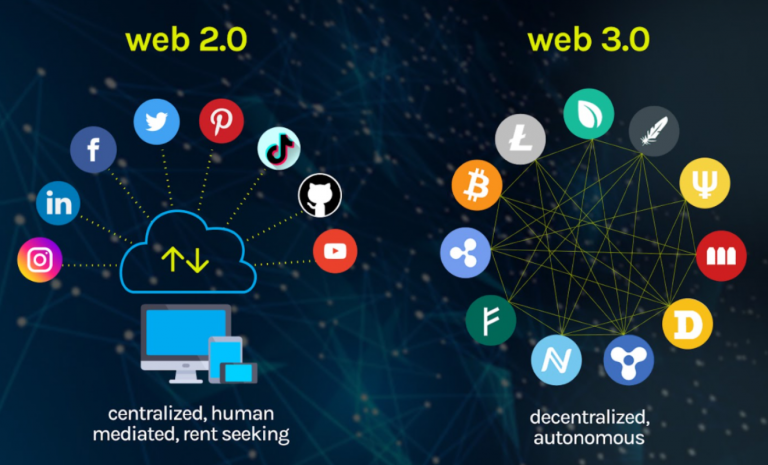
WEB 2.0 and WEB 3.0 Differences
Web 2.0 and Web 3.0 represent different stages in the evolution of the internet and web technologies.
Here are the key differences between Web 2.0 and Web 3.0:
Web 2.0:
- User-Generated Content: Web 2.0 is characterized by the shift from static websites to interactive platforms where users can create, share, and interact with content. Social media, blogs, and wikis are prominent examples of user-generated content on Web 2.0.
- Social Networking: Web 2.0 introduced the rise of social networking platforms like Facebook, Twitter, LinkedIn, etc. These platforms facilitated social interactions and enabled users to connect with each other and share information easily.
- Collaboration: Web 2.0 emphasized collaboration among users. Online collaboration tools and platforms enabled users to work together on projects, share documents, and communicate in real-time.
- Rich User Experience: Web 2.0 brought about more dynamic and interactive user interfaces. Rich internet applications (RIAs) used technologies like AJAX to provide smoother and more responsive user experiences.
- Mobile Applications: While Web 1.0 was primarily accessed through desktops, Web 2.0 saw the rise of mobile internet and the development of mobile applications, enabling users to access web services from their smartphones and tablets.
Web 3.0:
- Semantic Web: Web 3.0 is often referred to as the "Semantic Web" because it aims to make web content more understandable to machines. It involves adding metadata and context to web data, allowing machines to interpret and process information intelligently.
- Decentralization: Web 3.0 emphasizes decentralization, moving away from reliance on centralized servers. Blockchain and distributed ledger technologies are at the core of this concept, enabling peer-to-peer interactions and removing intermediaries.
- Smart Contracts: Web 3.0 introduces the concept of smart contracts, which are self-executing contracts with the terms of the agreement directly written into code. Smart contracts enable automated and trustless transactions without the need for intermediaries.
- Personalization and AI: Web 3.0 leverages artificial intelligence (AI) to provide more personalized and context-aware user experiences. AI algorithms analyze user behavior and preferences to offer tailored content and services.
- Enhanced Privacy and Security: Web 3.0 focuses on improving privacy and security for users. Decentralization and encryption technologies help protect user data and prevent unauthorized access.
- Internet of Things (IoT) Integration: Web 3.0 incorporates the Internet of Things, allowing connected devices to interact with each other and with users, leading to more seamless and integrated experiences.
It's important to note that the transition from Web 2.0 to Web 3.0 is an ongoing process, and the full realization of Web 3.0's potential is still evolving.
Additional Reading: